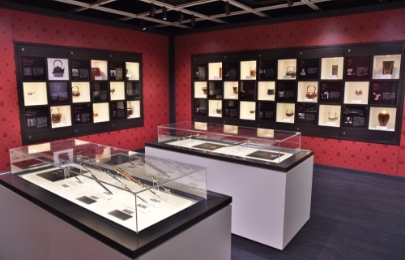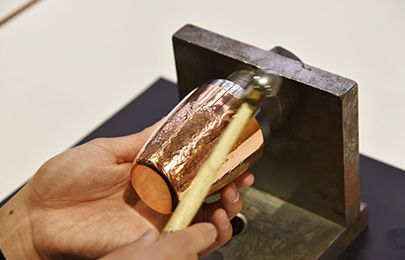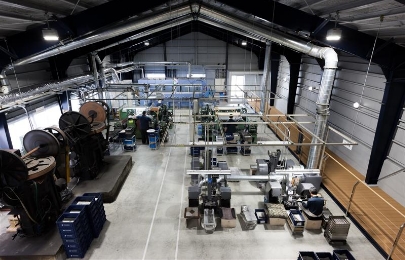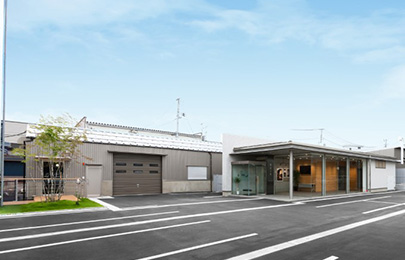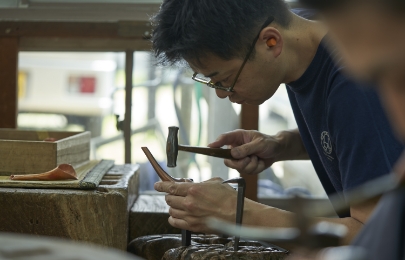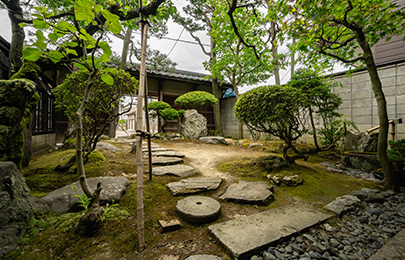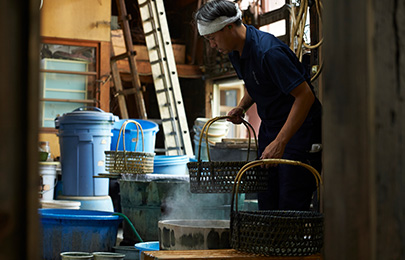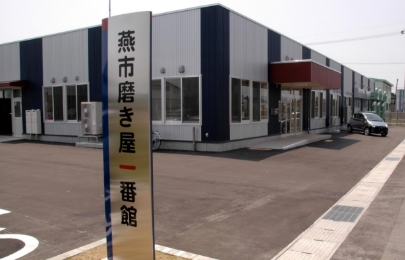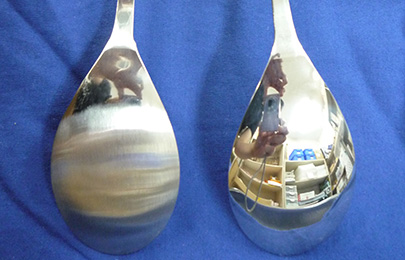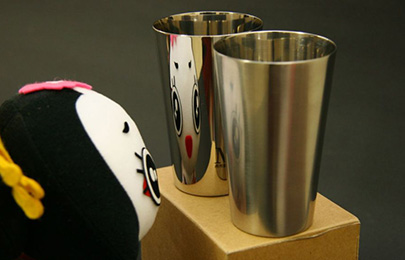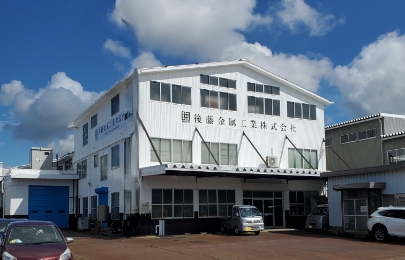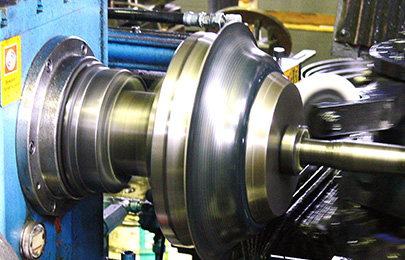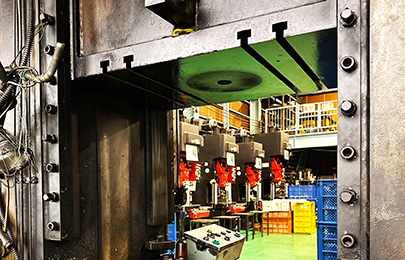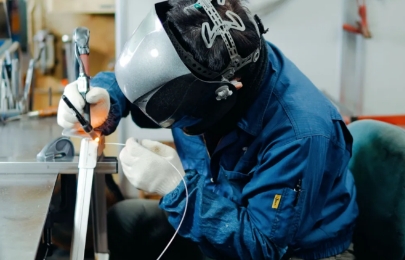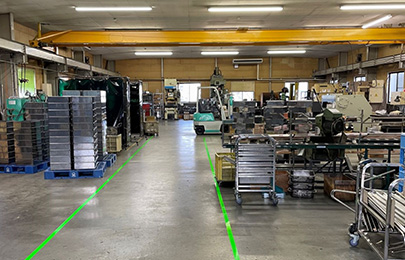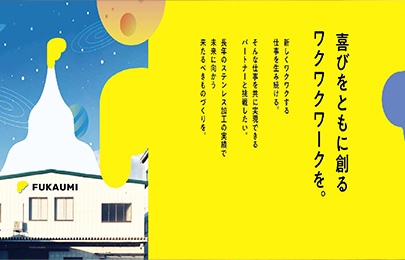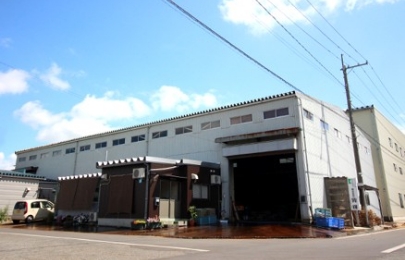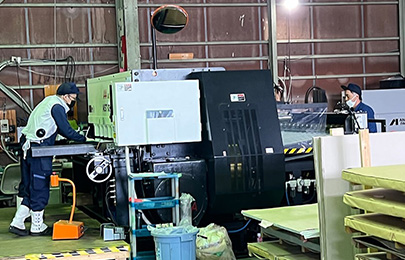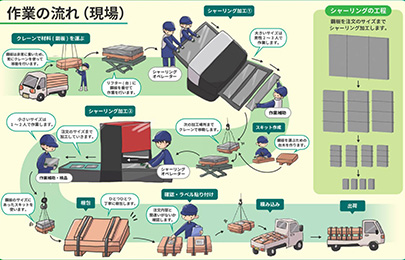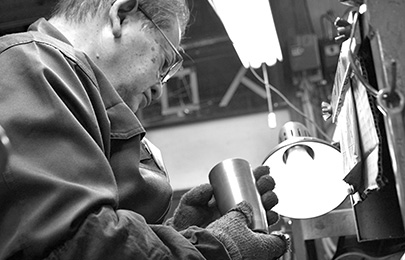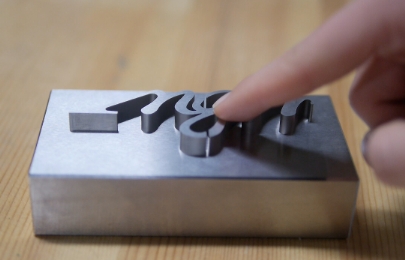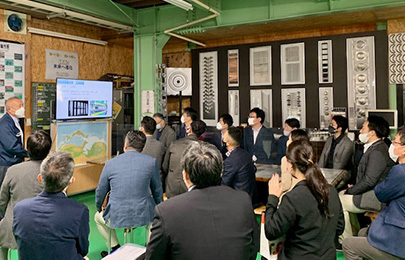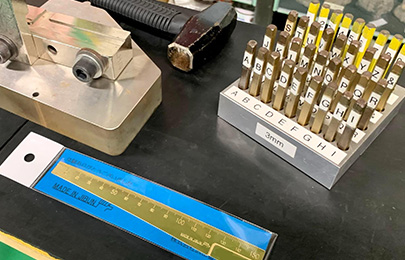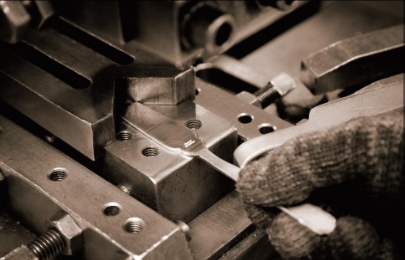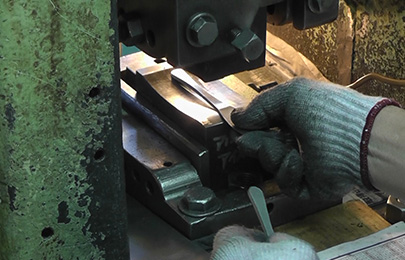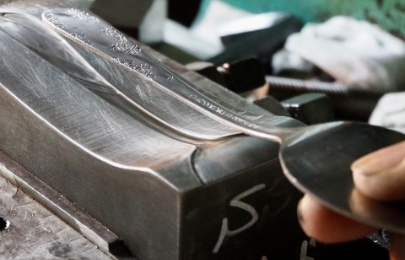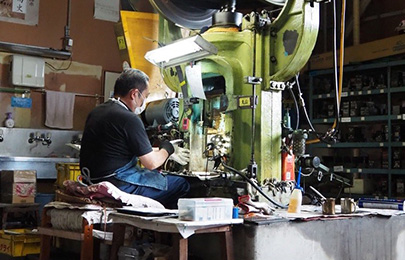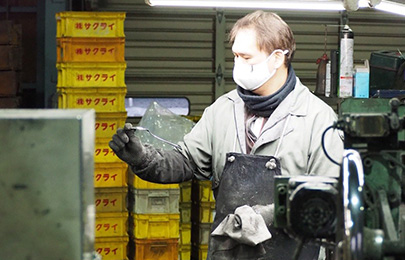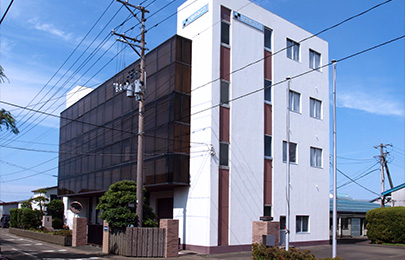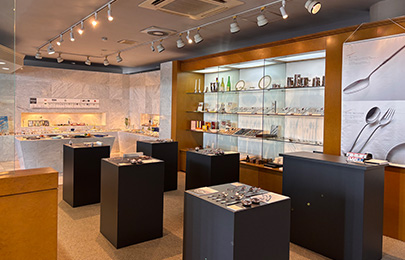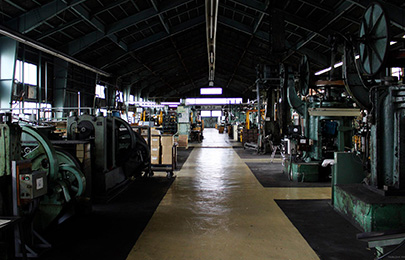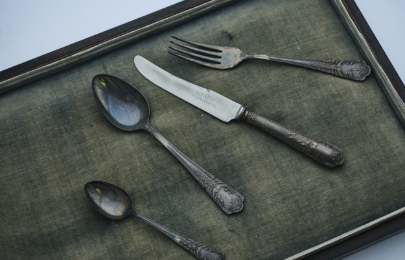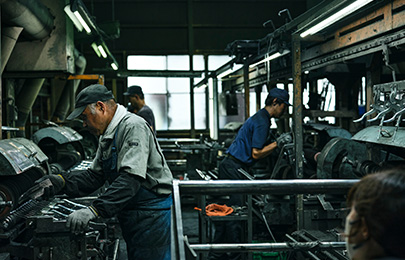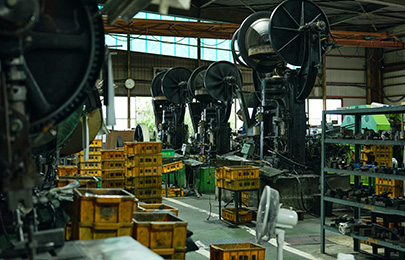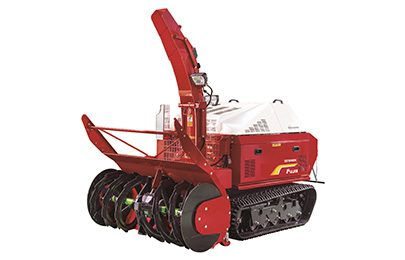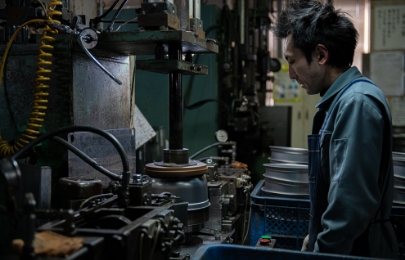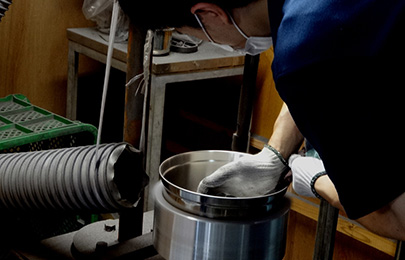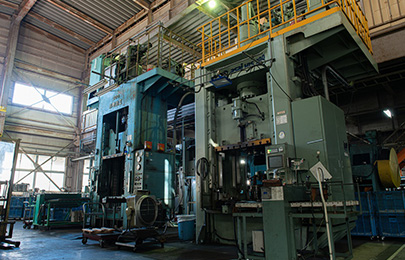- お問い合わせ
- (一社)燕市観光協会 0256-64-7770
みる
- 個人向け
- 団体向け
燕市産業史料館
モノづくりのまち燕の金属加工産業の歴史と体験が楽しめる!
燕市がなぜ金属加工のまちになったのか、歴史の紐をときつつ体験でものづくり・思い出づくり
- 定員
- 9名まで
- 休業日
- 月曜日(祝日の場合は翌平日)、年末年始
- 営業時間
- 9:00~16:30
藤次郎 株式会社
グッドデザイン賞受賞の工場見学をしてみては?
ほかではなかなかみられない包丁一貫生産の工場
※団体予約は燕市観光協会まで
- 定員
- 9名まで
- 休業日
- 祝日
- 営業時間
- 10:00~17:30
株式会社 玉川堂
燕の鎚起銅器はここから始まった
登録有形文化財の建物や工房も必見
- 定員
- 9名まで
- 休業日
- 日曜日・祝日
- 営業時間
- 10:00、11:00、13:00、14:00、15:10
燕市磨き屋一番館
職人の磨きの技術を目の前で
金属研磨の技術の後継者育成施設
- 定員
- 9名まで
- 休業日
- 土曜日・日曜日・祝日
- 営業時間
- 9:30~16:00
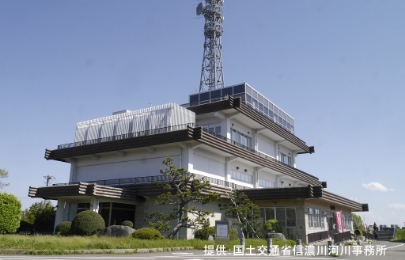
信濃川大河津資料館
越後平野は大河津分水なくして、語れず
信濃川の歴史や大河津分水に関する資料を展示
- 定員
- 9名まで
- 休業日
- 月曜日(祝日の場合は翌平日)、年末年始
- 営業時間
- 9:00~16:00
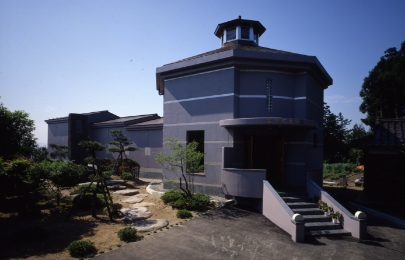
燕市長善館史料館
越北の鴻都(えつほくのこうと)の名を寄せられた私塾
当時の新潟県を支えた人々を多数輩出
- 定員
- 9名まで
- 休業日
- 月曜日、年末年始
- 営業時間
- 9:00~16:30
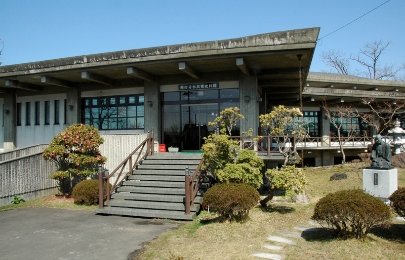
燕市分水良寛史料館
良寛さんの慈しみに触れる
良寛さまの遺墨と関係資料を見ることができる
- 定員
- 9名まで
- 休業日
- 月曜日(祝日の場合は翌平日)、年末年始
- 営業時間
- 9:00~16:30
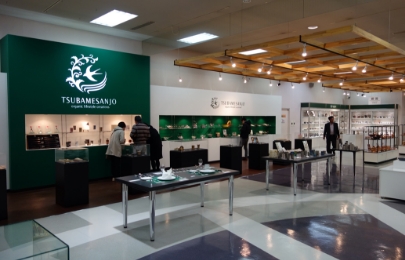
燕三条地場産業振興センター
つばめの思い出作りにかかせない・・・
道の駅・物産館・レストラン等複合施設
- 定員
- 9名まで
- 休業日
- 毎月第1水曜日、年末年始
- 営業時間
- 9:30~17:30
30~50分
後藤金属工業 株式会社
見せる技術は数知れず、ニコニコ社長がご案内
スピニング加工・プレス加工・溶接・ロール加工・金型設計・製造工場
- 定員
- 15~20名まで
- 休業日
- 土曜日・日曜日
- 営業時間
- 10:15~15:30(最終受入時間)
株式会社 玉川堂
燕の鎚起銅器はここから始まった
建物が登録有形文化財の鎚起銅器工房
- 定員
- 20名まで
- 休業日
- 日曜日・祝日
- 営業時間
- 9:00〜12:00/13:00〜17:00
※6名以上の団体の場合、お一人2,000円(税込)の見学料がかかります
燕市磨き屋一番館
職人の磨きの技術を目の前で
研磨工場の見学とスプーン・ビアカップの磨き体験
- 定員
- 10~20名まで
- 休業日
- 土曜日・日曜日・祝日
- 営業時間
- 9:30~16:00
有限会社 フカウミ
ステンレス加工のワクワク!ワーク
何ができるかお楽しみのステンレス加工工場
- 定員
- 15~20名まで
- 休業日
- 土曜日・日曜日・祝日
- 営業時間
- 10:30~16:00(最終受入時間)
株式会社 興輝
大きな鋼板の切断は、迫力満点
ステンレス鋼材販売・シャーリング加工
- 定員
- 15~20名まで
- 休業日
- 土曜日・日曜日・祝日
- 営業時間
- 9:00~15:20(最終受入時間)
山崎研磨工業
磨きの駆け込み寺を目指すスペシャリスト
わきあいあいの少人数の金属研磨加工工場
- 定員
- 10名程度
- 休業日
- 燕三条産業カレンダー
- 営業時間
- 10:00~15:00(最終受入時間)
60~70分
藤次郎 株式会社
燕、工場見学の先駆者、グッドデザイン賞受賞の工場
国内でも数少ない包丁の一貫生産工場、ギャラリーで一番高価な包丁は・・・
- 定員
- 50名まで
- 休業日
- 祝日
- 営業時間
- 10:00~17:30(最終受入時間16:30)
武田金型製作所
文字が消えるマジックメタルは必見!
大量生産製品を作る際に使われる
順送金型設計製作工場
- 定員
- 15~20名まで
- 休業日
- 土曜日・日曜日
(土曜日・祝日は日によって営業)
- 営業時間
- 10:00~15:30(最終受入時間)
株式会社 トーダイ
カトラリーに厨房用品、多岐にわたった商品ラインナップ
金属洋食器の一貫生産工場、近代的な工場で少人数に対応
- 定員
- 15~20名まで
- 休業日
- 燕三条産業カレンダー
- 営業時間
- 10:00~15:30(最終受入時間)
株式会社 サクライ
研磨の技術はピカイチ、ステンレス以外の素材とも組み合わせてのものづくり
金属洋食器の一貫生産工場、自動研磨機は見ごたえあり
- 定員
- 30名まで
- 休業日
- 土曜日・日曜日
- 営業時間
- 10:00~16:00(最終受入時間)
※製造工場のみの見学も可能です
山崎金属工業 株式会社
ノーベル賞晩餐会で使用されるカトラリーはここでつくられた
金属洋食器の生産工場、ショールームにはユリゲラーも曲げられなかったスプーンが!
- 定員
- 30名まで
- 休業日
- 土曜日・日曜日・祝日
- 営業時間
- 10:00~15:10(最終受入時間)
燕物産 株式会社
日本初の匙屋
創業は宝暦元年(1751年)金物屋、名だたる方々をお迎えした金属洋食器メーカー
- 定員
- 40名まで
- 休業日
- 日曜日、祝日
(土曜日は燕市産業カレンダーに準ず)
- 営業時間
- 10:30~15:15(最終受入時間)
フジイコーポレーション 株式会社
創業1865年の機械メーカー、南極大陸は一人勝ち?
除雪機、草刈機等の製造工場には数々の工夫あり
- 定員
- 24名まで
- 休業日
- 土曜日・日曜日・祝日
- 営業時間
- 10:00~15:00(最終受入時間)
株式会社 フジノス
世界で初めてIH対応の業務用鍋を開発
ステンレス鋼材のプレス工程、研磨工程は見応えあり
- 定員
- 40名まで
- 休業日
- 土曜日・日曜日・祝日
- 営業時間
- 10:00~15:10(最終受入時間)
燕市産業史料館
モノづくりのまち燕の金属加工産業の歴史と体験が楽しめる!
燕市がなぜ金属加工のまちになったのか、歴史の紐をときつつ体験でものづくり・思い出づくり
- 定員
- 40名まで
- 休業日
- 月曜日(祝日の場合は翌平日)
- 営業時間
- 9:00~16:30
- ※所用時間は目安です。当日の状況により前後する場合があります。
- ※事業所の休業日はそれぞれ異なります。ホームページ等でご確認ください。
予約申込フォーム
- ・このフォームは、10名以下の個人でのご利用はいただけません。
- ・申込フォーム送信で、予約が完了するものではありません。担当者より折り返しご連絡させていただきます。
- ・施設の都合で見学ができないこともあります。

